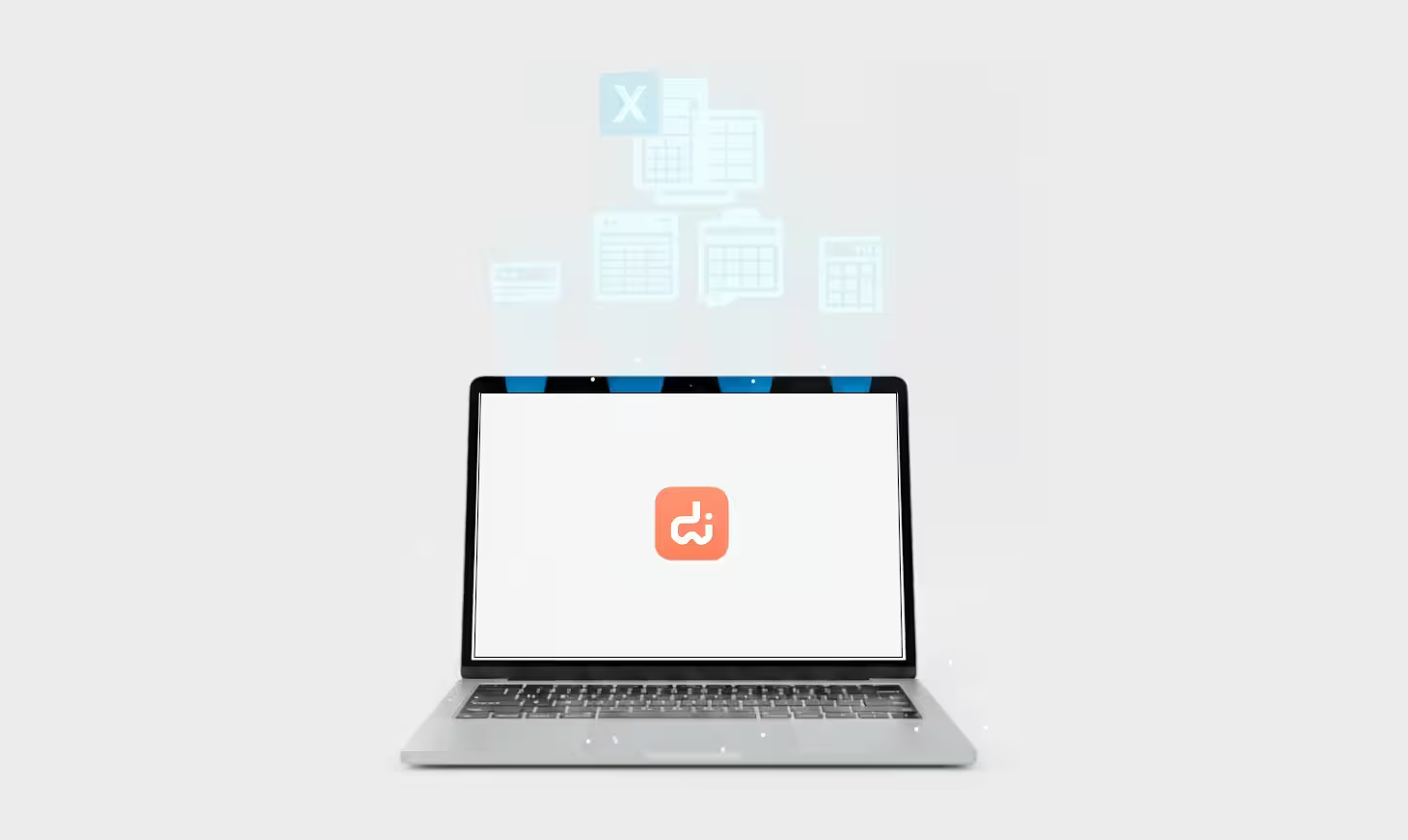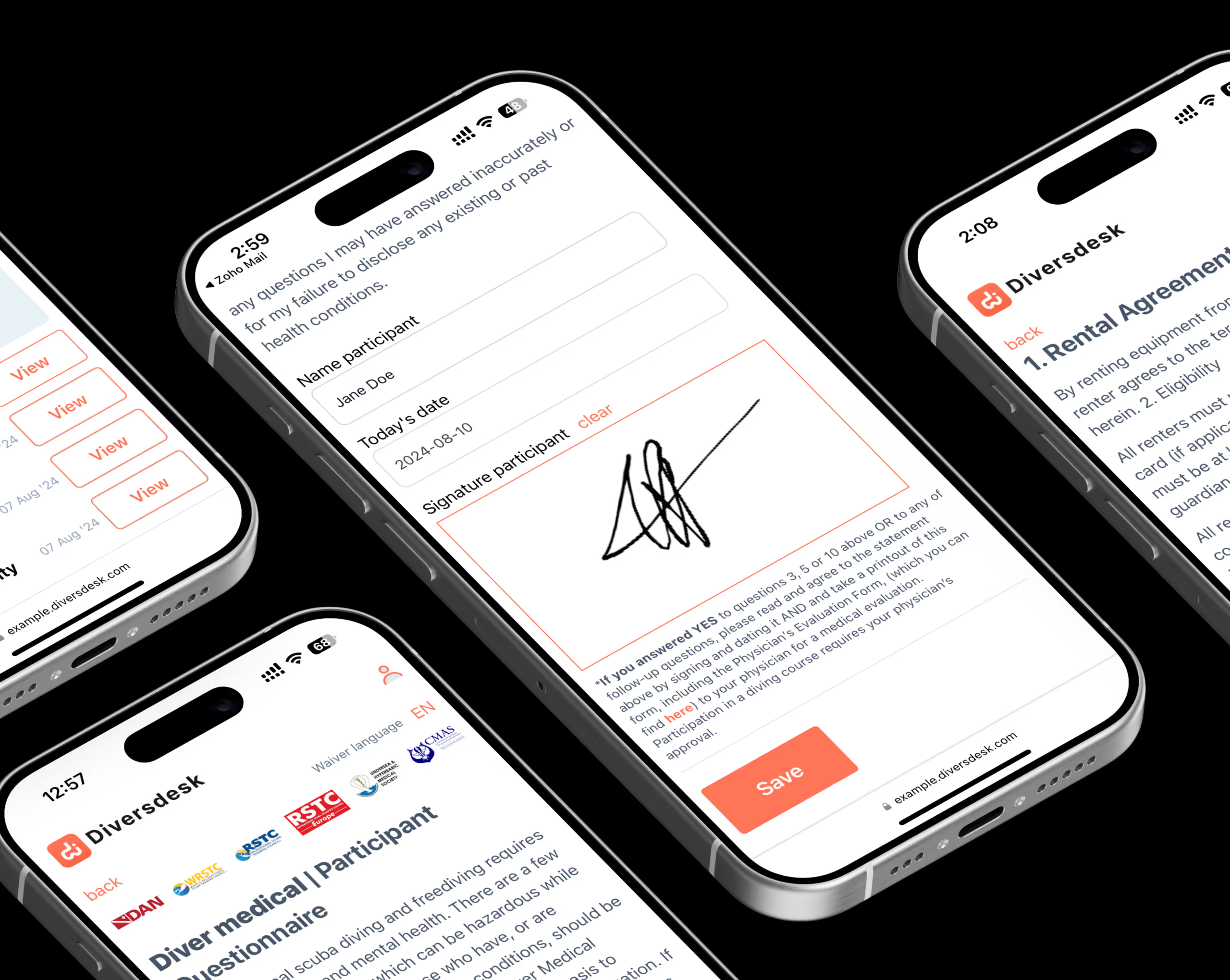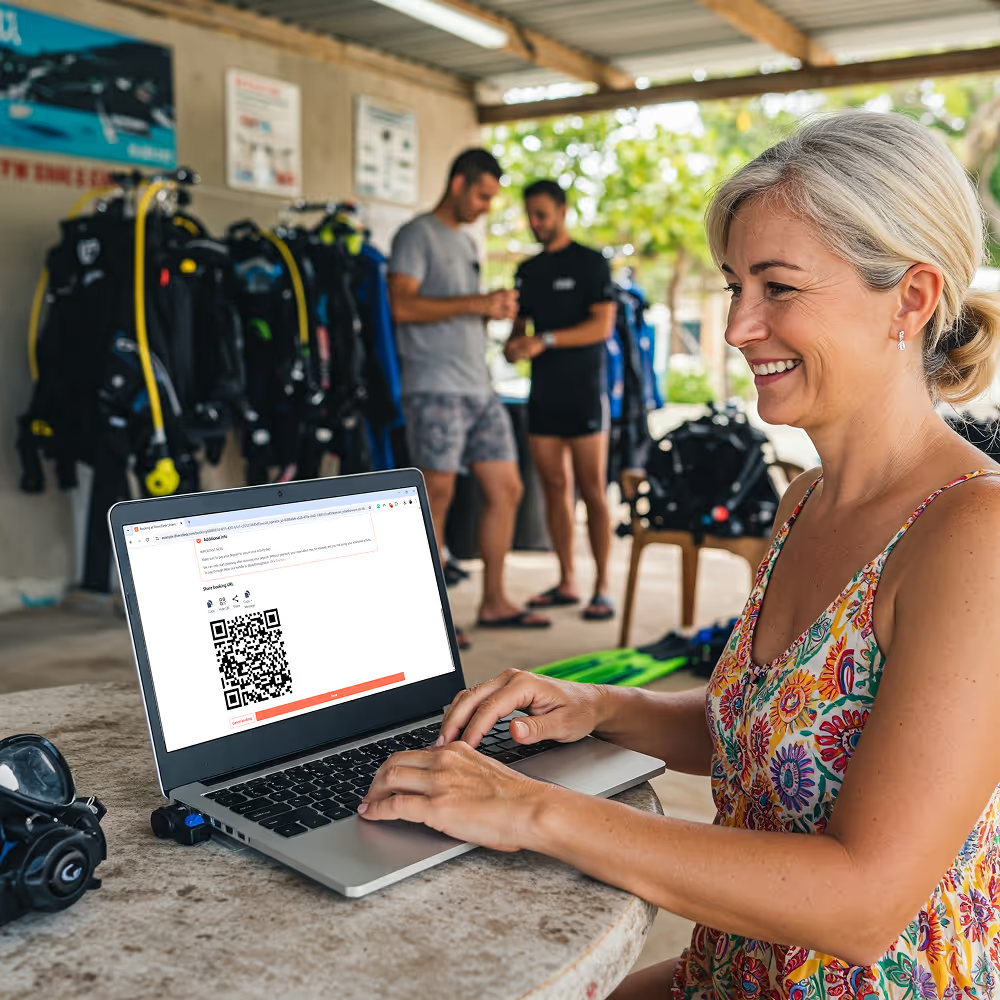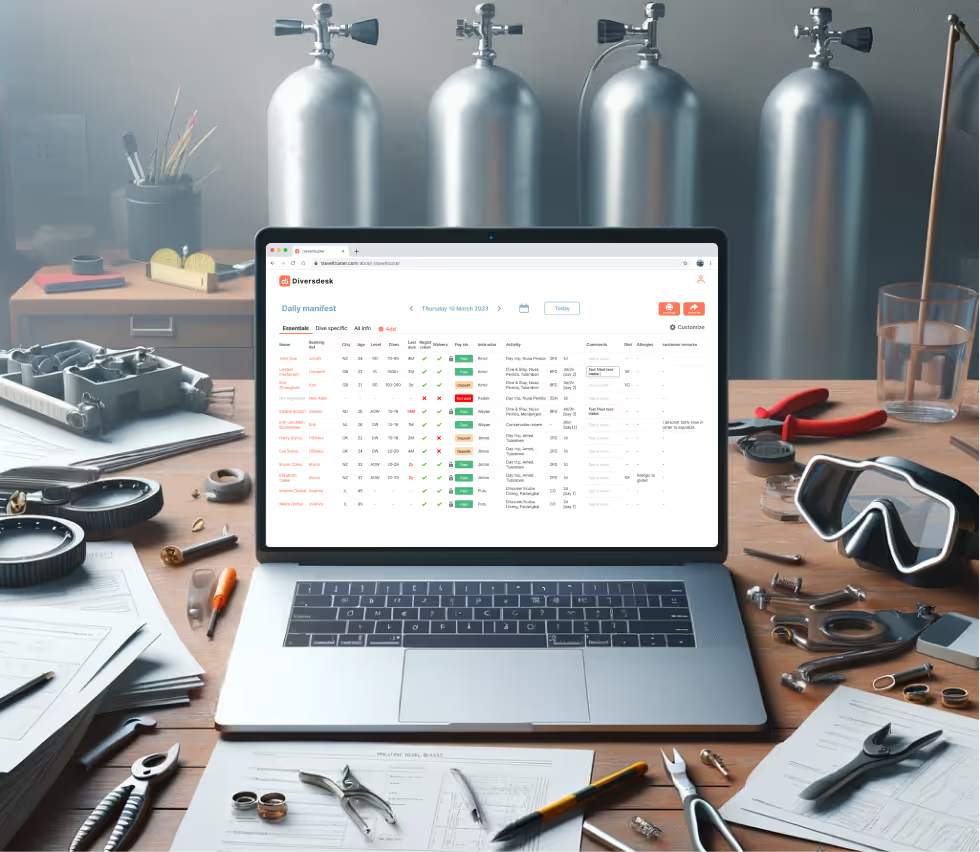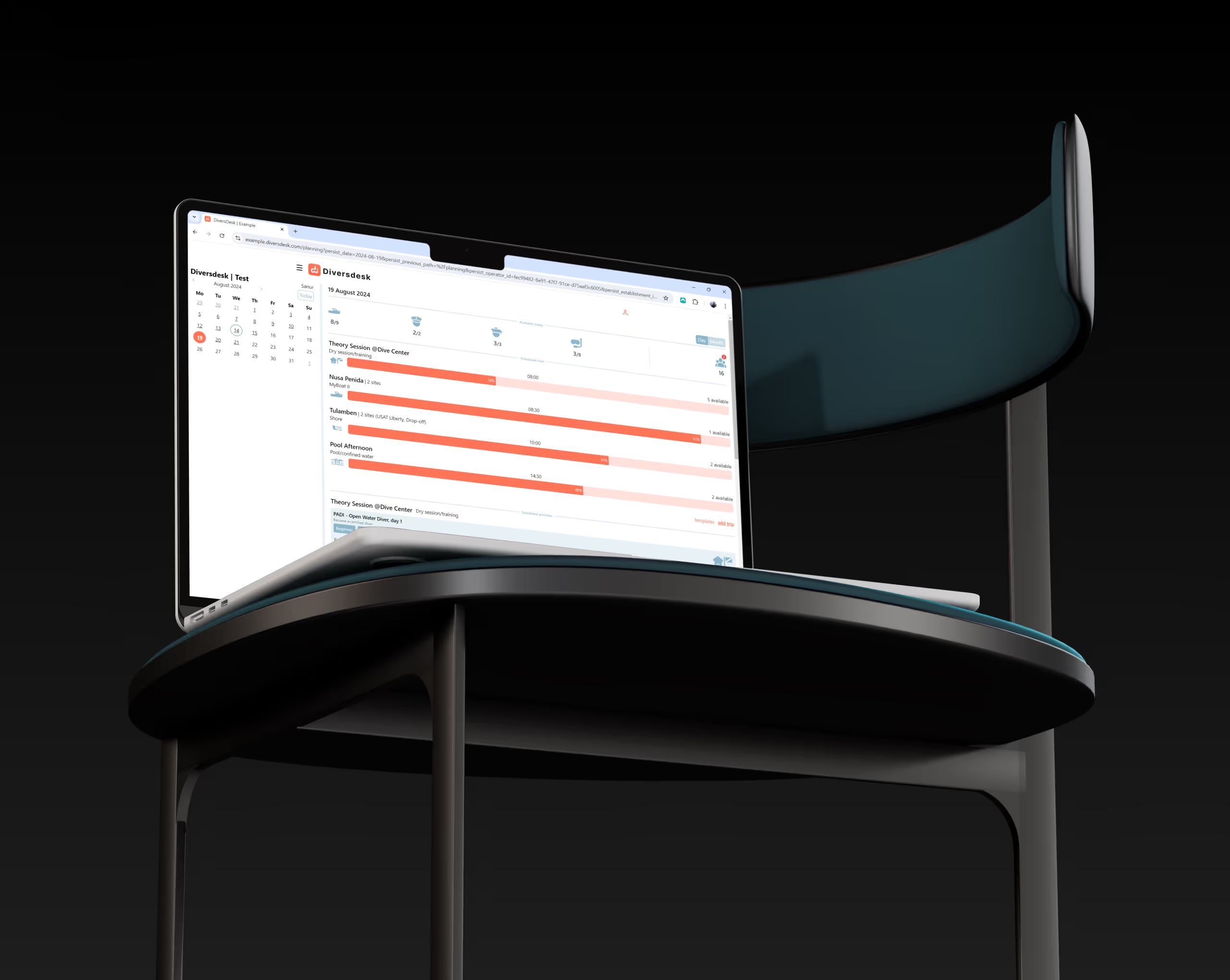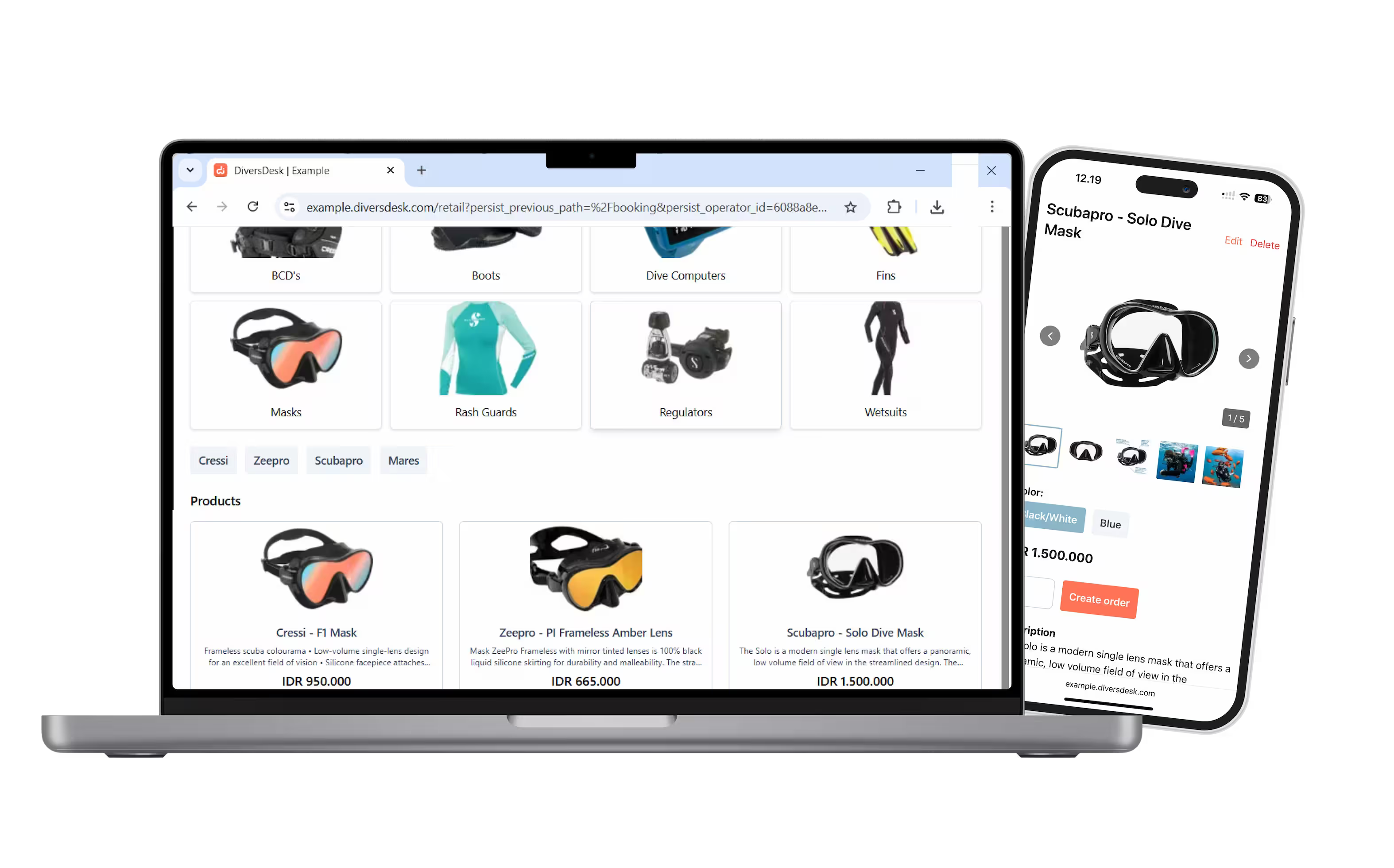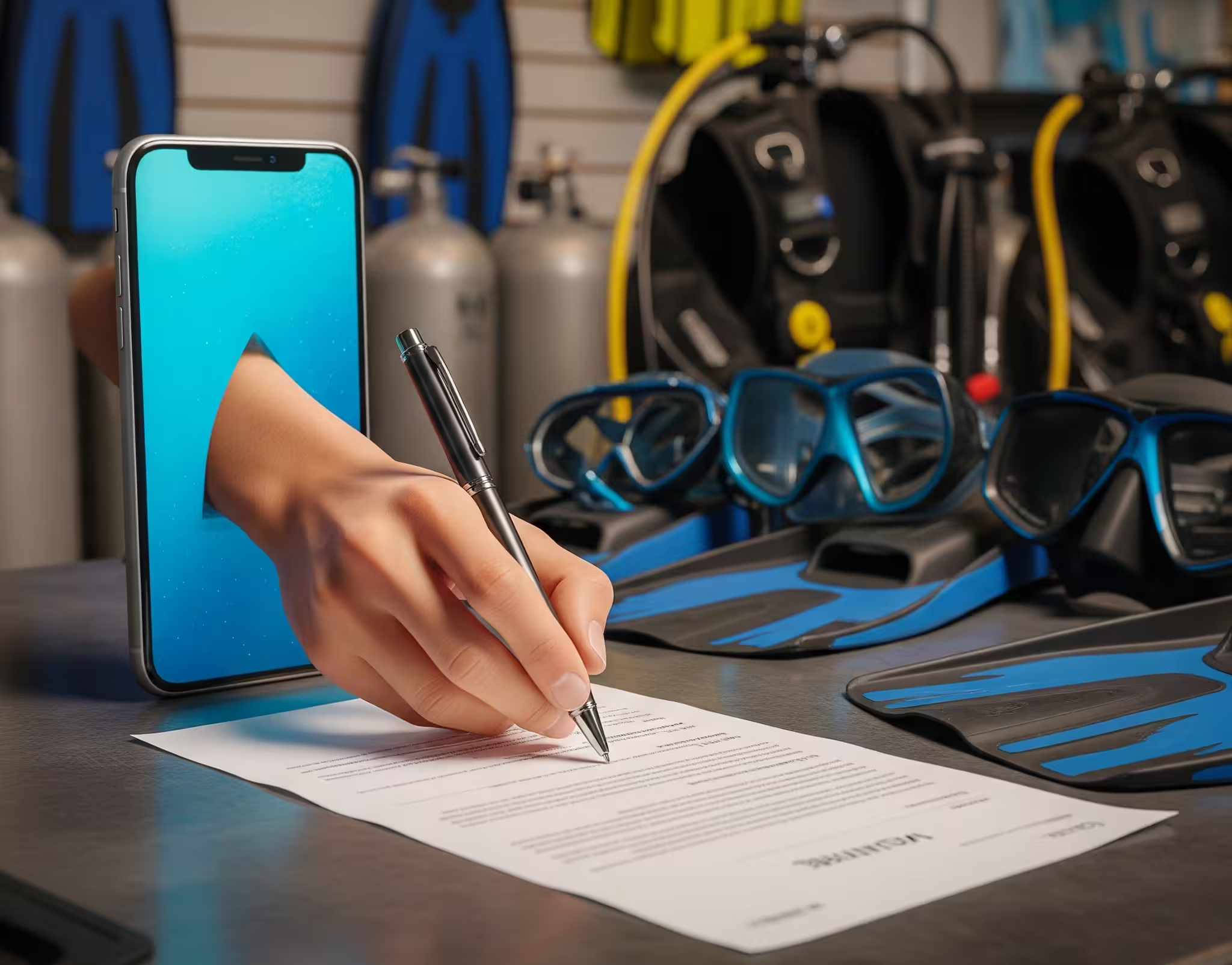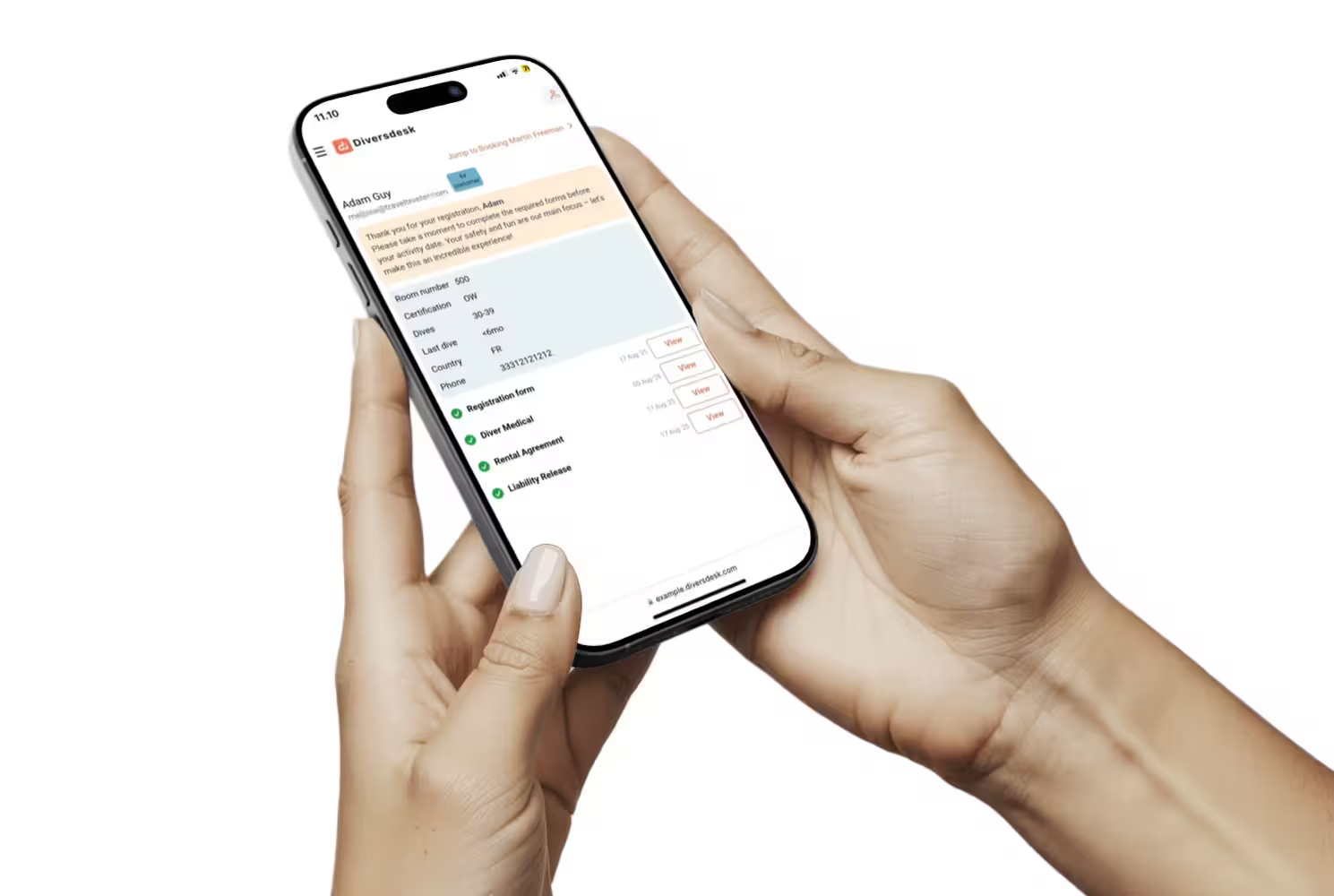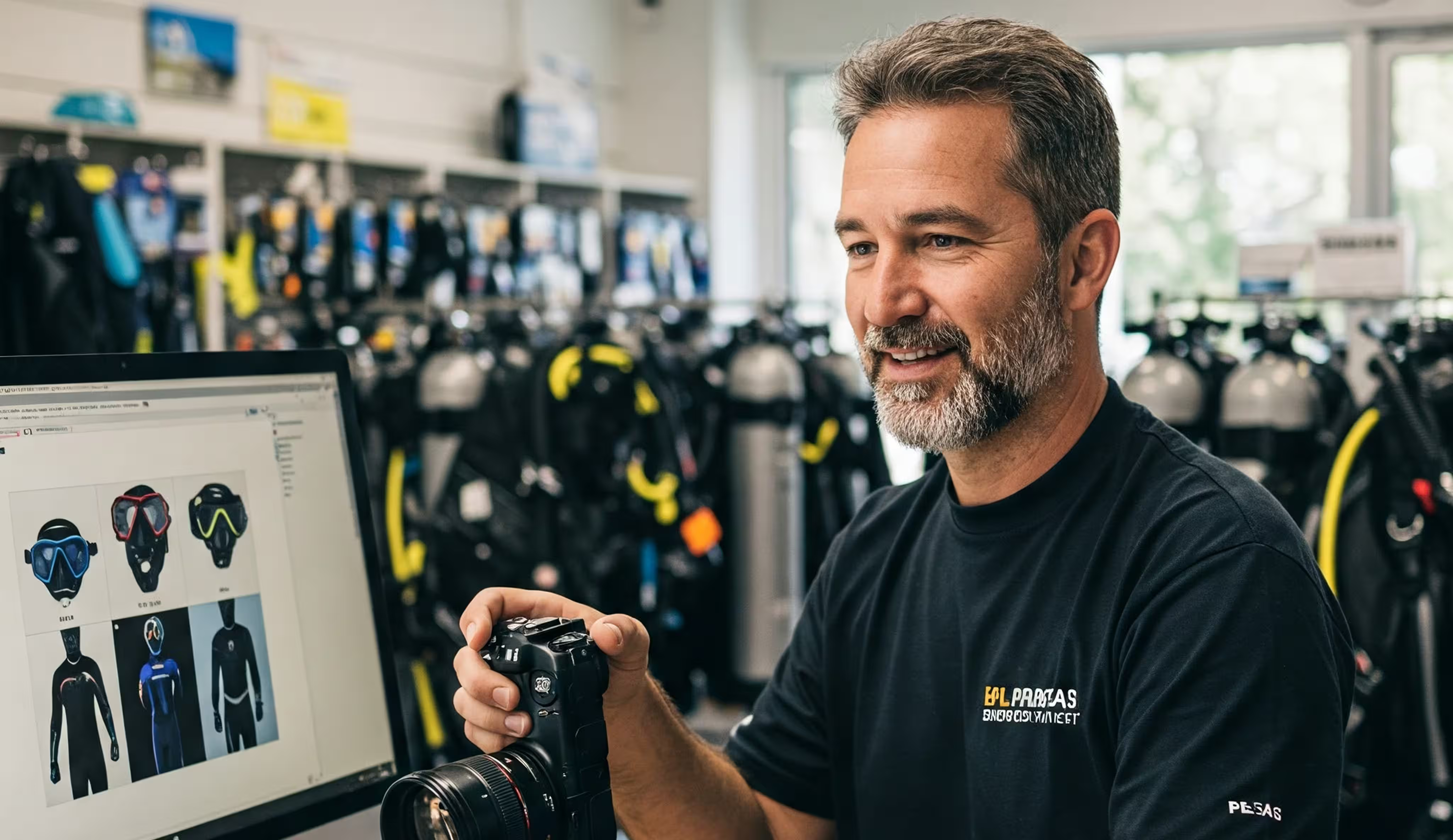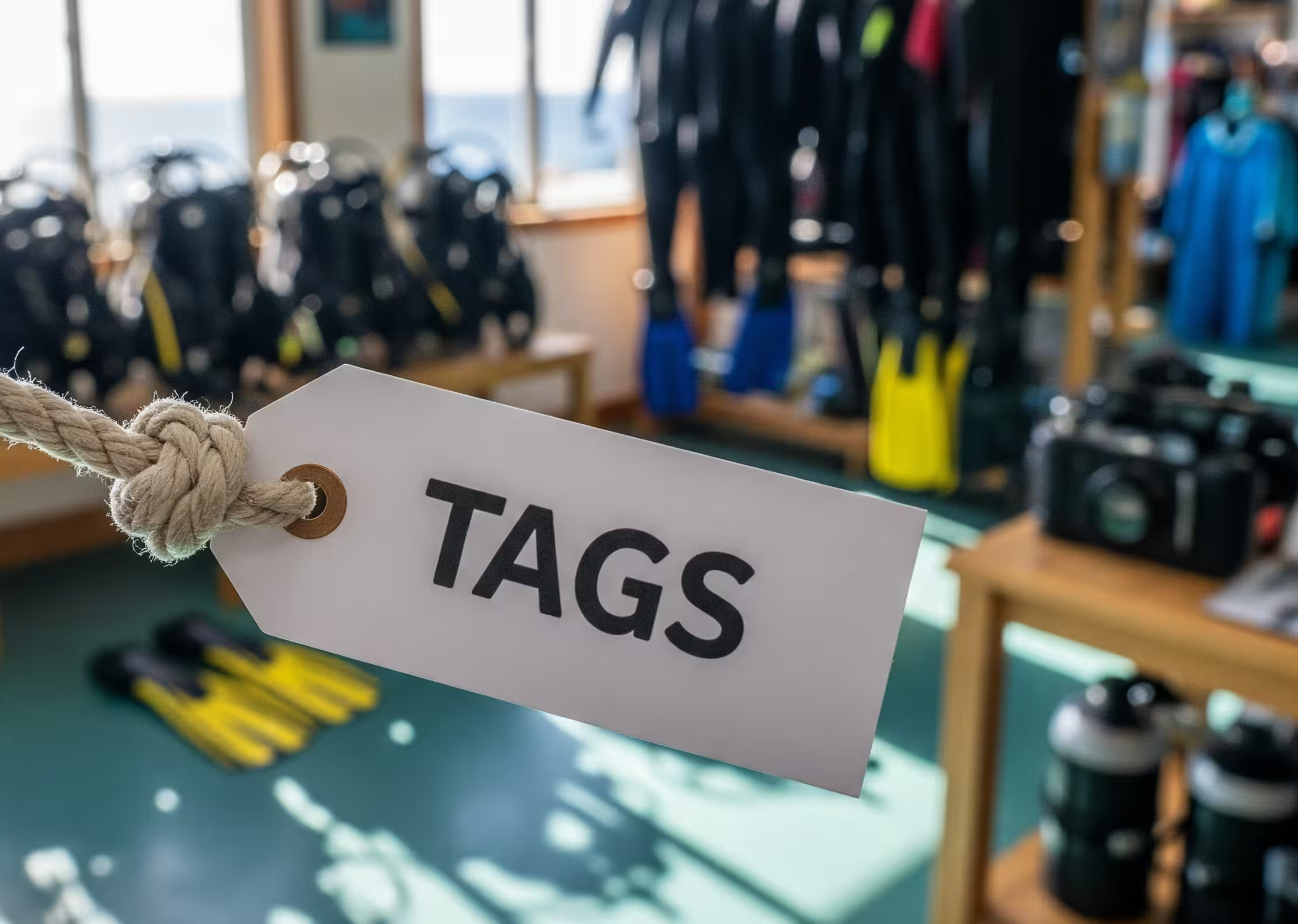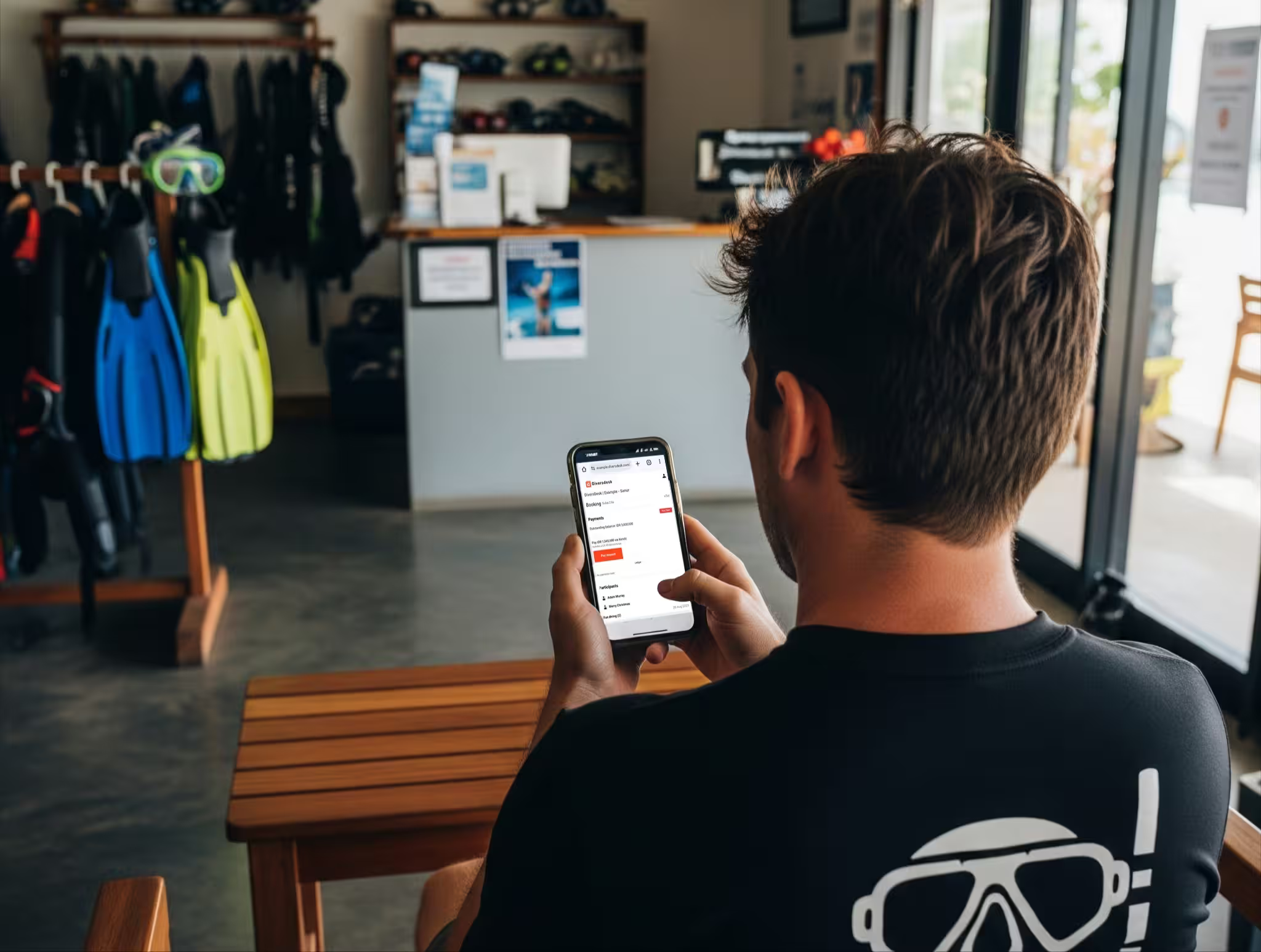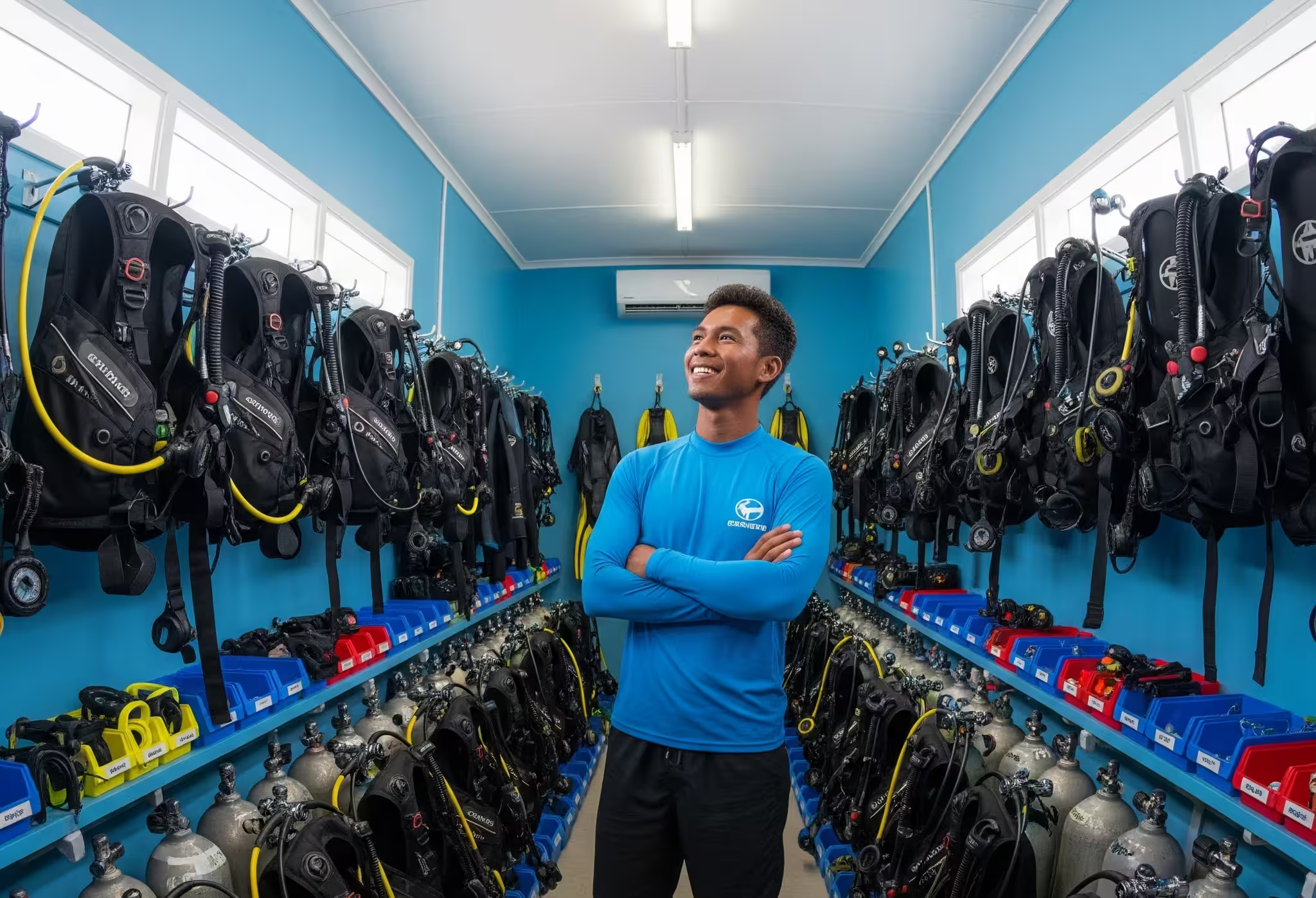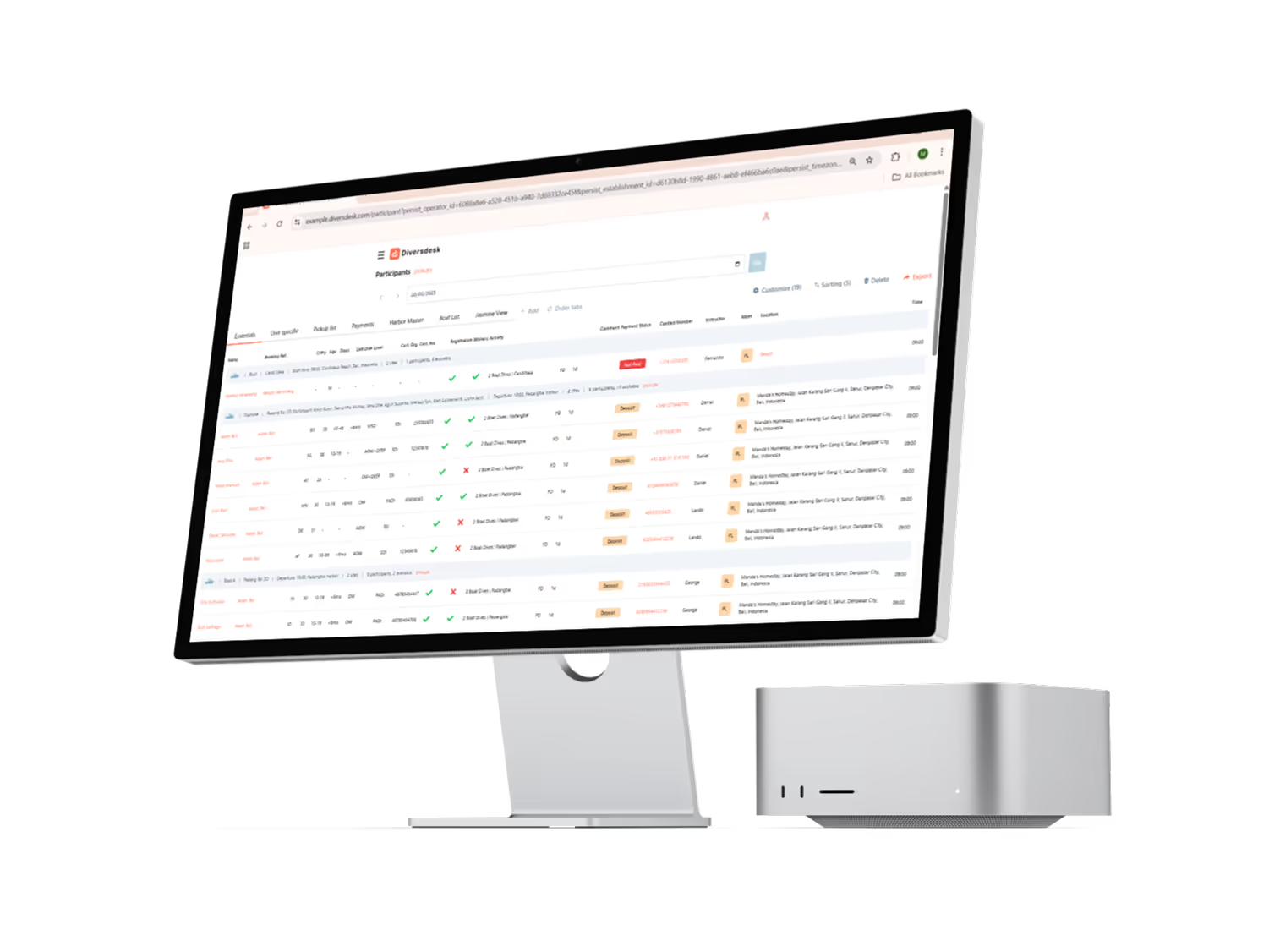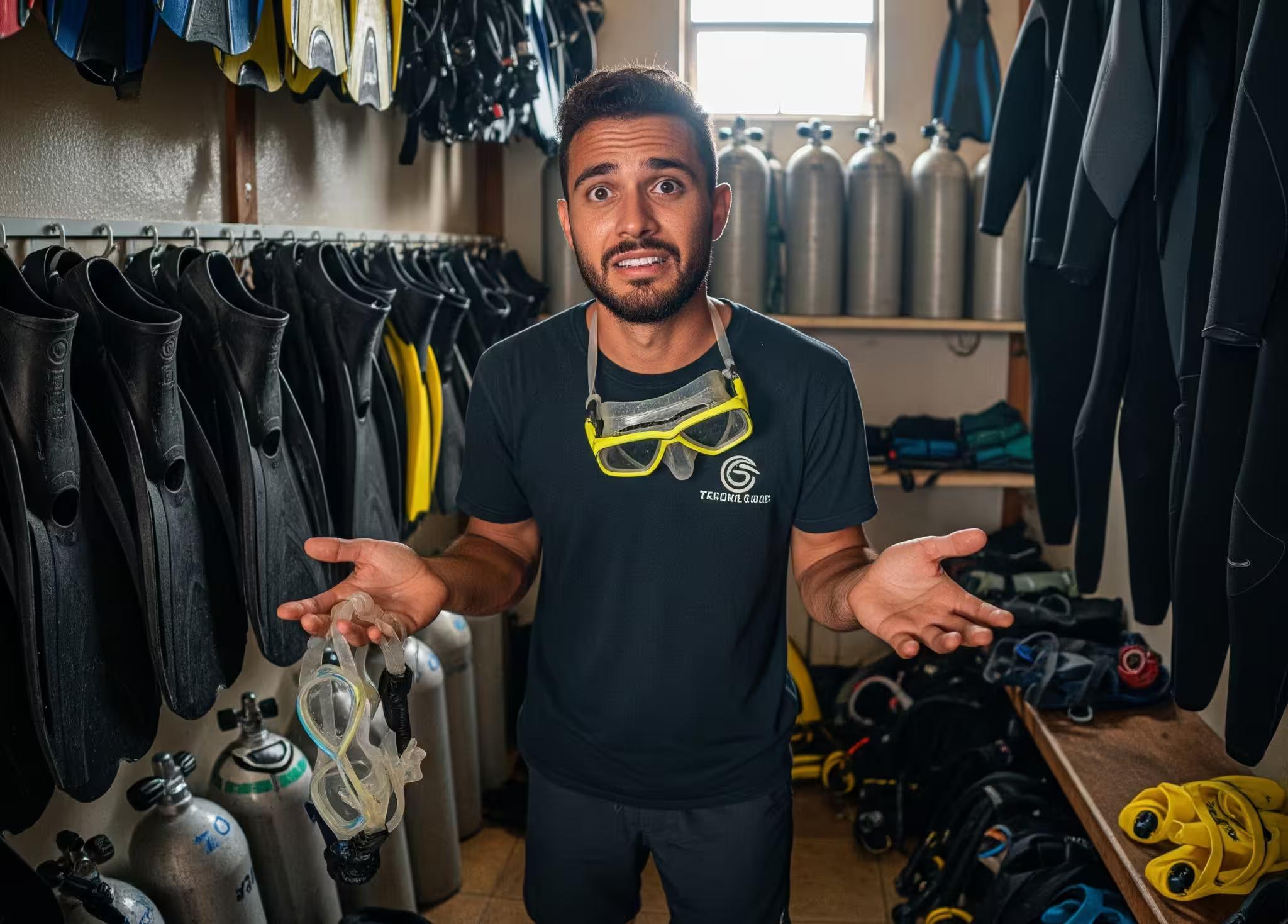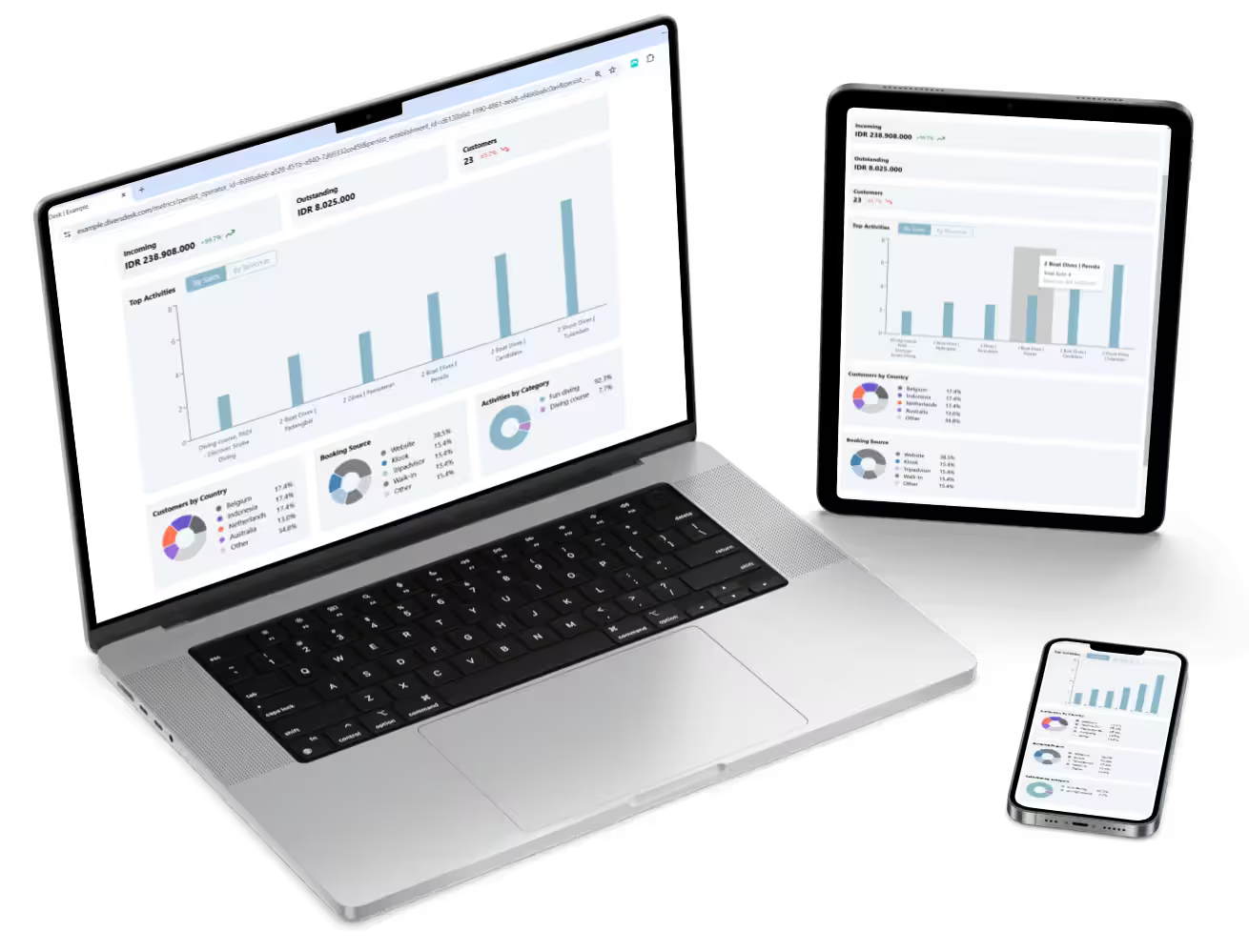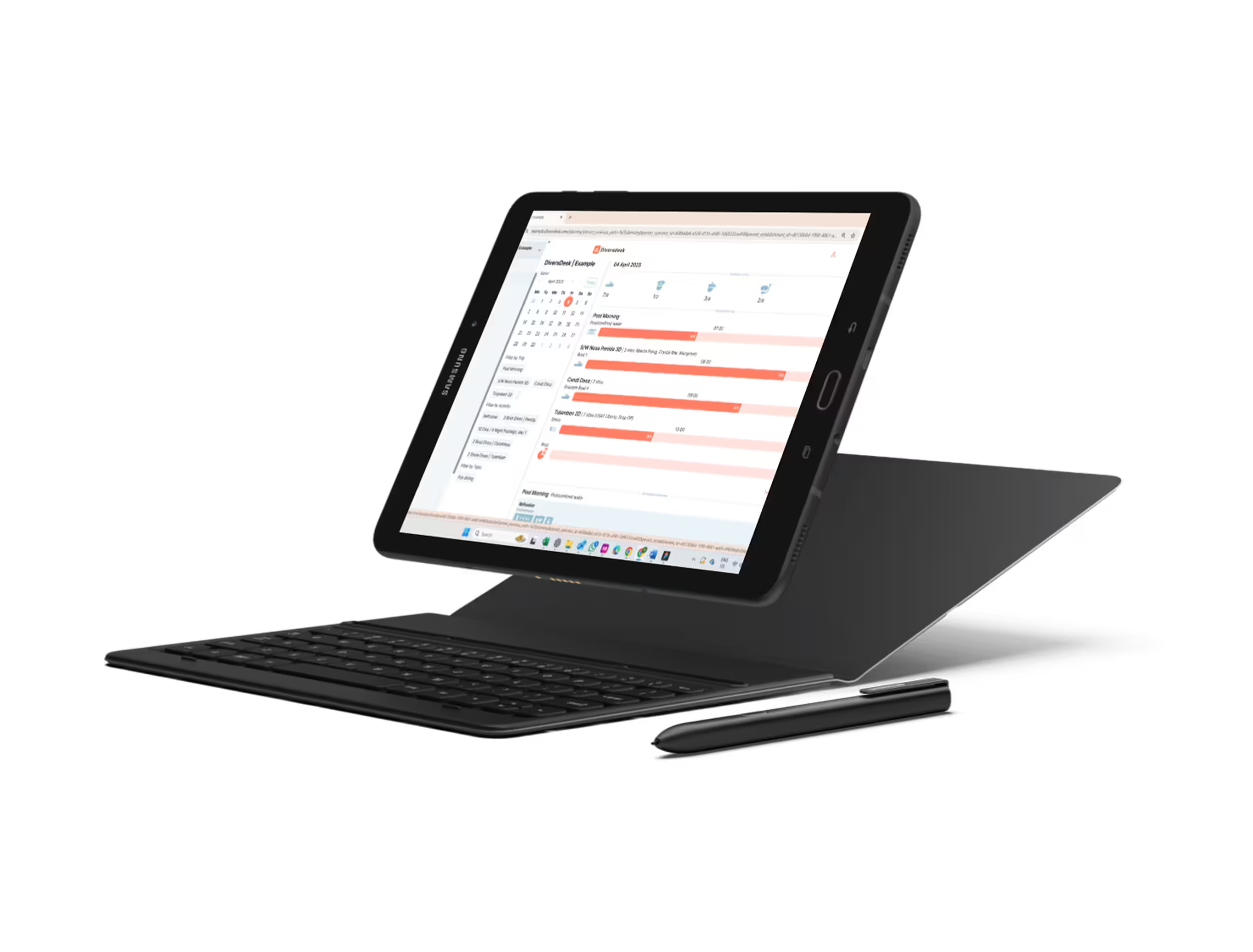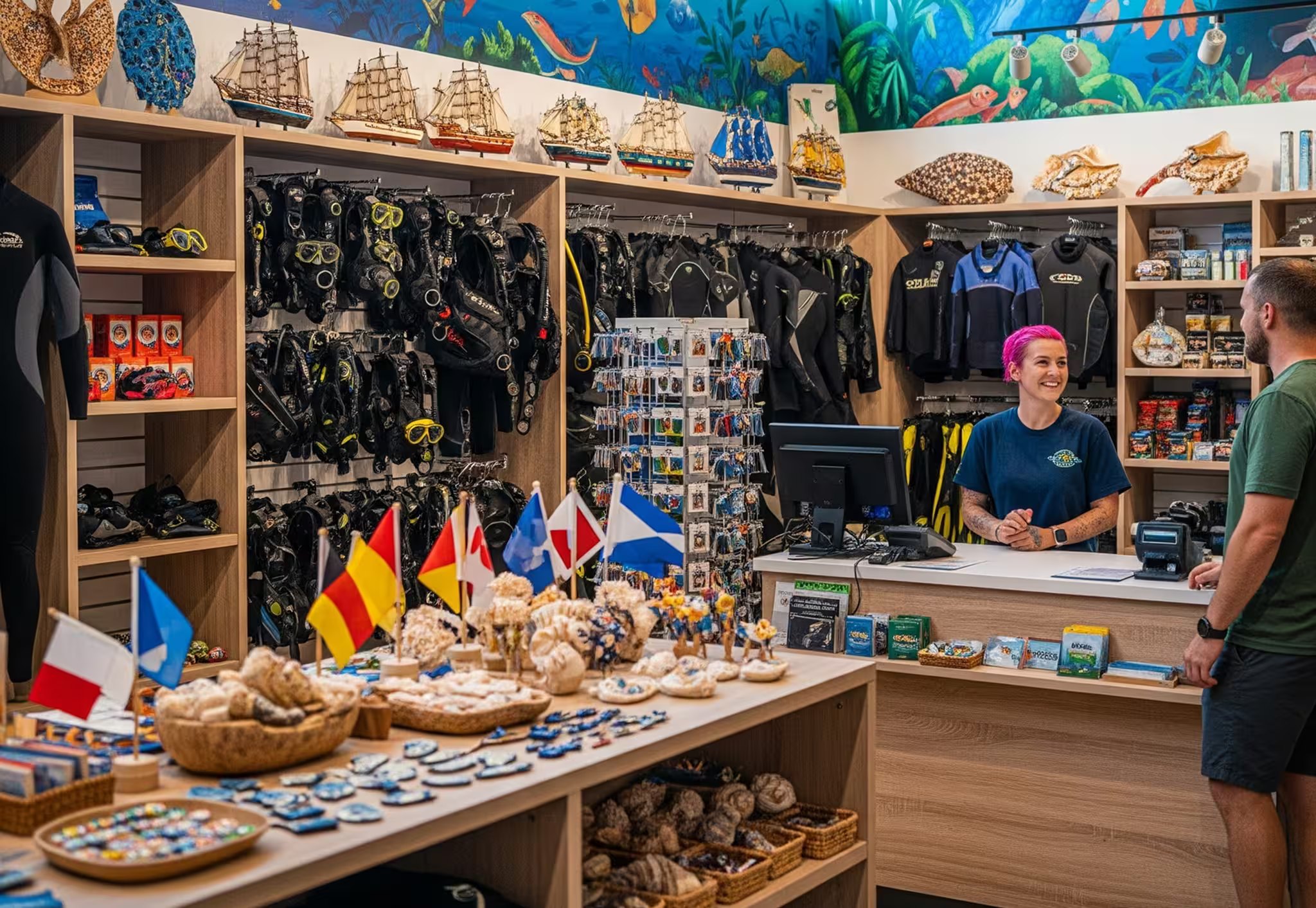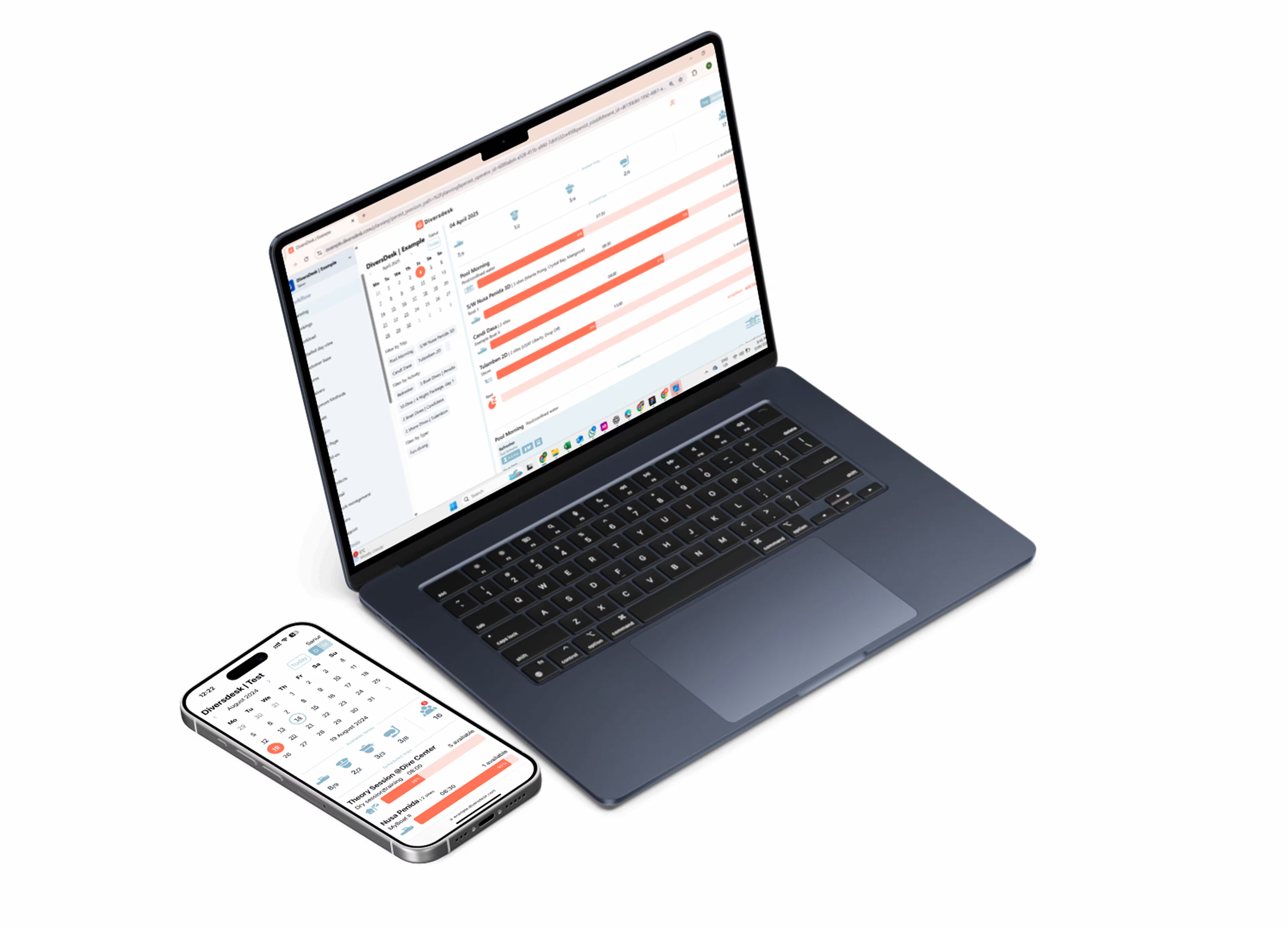Introduction
From what I’ve seen, running a dive centre often means relying on more than just one tool. You end up using several at the same time. There’s a spreadsheet for rentals, a calendar for staff and boat schedules, accounting software for payments, a separate payment app, and then sticky notes or even a big whiteboard to remind everyone about today’s trip. It works to some extent, but it quickly turns into extra work.
The bigger issue is that when your tools aren’t connected, mistakes creep in and staff spend extra time updating the same information in multiple places. That’s time and energy that could be better spent on your divers, to give them the best diving experience.
Diversdesk was built to change that. It’s an all-in-one platform built for dive centre management. Instead of switching between different apps all day, everything comes together in one place. Bookings, retail, rentals, payments, and waivers all live inside the same system, creating a workflow that’s smooth, accurate, and easy to manage.
You can use other dive centre management software, but the important thing is to check whether it truly brings everything together. The best dive centre software should be all in one. In this blog, I’ll walk you through the digital tools most dive shops can finally leave behind once they switch to Diversdesk, and show how an all-in-one platform makes operations simpler while supporting growth.
Spreadsheets
Most dive shops I’ve seen rely on more than one spreadsheet, often in Google Sheets or Microsoft Excel, with files called “gear list” or “rental bookings” and sometimes even separate ones for customer data and payments. At first glance it might feel like everything is under control, but in my opinion this setup often leads to confusion and extra work. Files can get messy, different versions float around, and it becomes easy to miss details. I think the bigger issue is that staff end up spending more time updating spreadsheets than actually serving divers.
How Diversdesk Helps
With Diversdesk, all of this information lives in one place where rentals, customer profiles, and payments are connected in real time. And if you still prefer having a spreadsheet, don’t worry because Diversdesk lets you export your data into CSV files, so you can keep things simple without losing the benefits of a proper system.
Accounting Apps
Many dive shops rely on separate accounting apps just to keep track of payments, invoices, and balances. That means another login, another subscription, and another tool the staff need to figure out. At the end of the day, you’re still recapping who has paid, who hasn’t, and chasing numbers across different platforms.
How Diversdesk Helps
Diversdesk brings these tasks into the same system where you already manage bookings. Payments, deposits, and invoices can all be handled in one place, so you can see what’s been paid and what’s still outstanding at a glance. Sales and payment reports are built in, and if you still want a file for reference, you can export the data in just a few clicks. In my opinion, this is more than enough if you want a simple solution that keeps the accounting side of your dive shop clear and accurate.
And if you do need more, Diversdesk also integrates fully with QuickBooks. With a single click, payments are synced and recorded, andI belive this will save even more time and reducing errors.
Separate Calendar Planners
Dive centres often rely on Google Calendar, paper planners, or separate scheduling apps to keep track of staff and boat schedules. At first it seems manageable, but in my opinion, it often leads to double bookings, missed handovers, and plenty of “who’s doing what again?” moments. I think this scattershot approach adds more confusion than clarity, especially when the team is busy and needs quick answers.
How Diversdesk Helps
Diversdesk includes built-in scheduling that keeps everything in one calendar. Your team can see all activities in real time. Staff, boats, and resources are connected in the same place, so nothing slips through the cracks. No syncing, no chasing updates, just one clear overview that everyone can trust. And if there’s a sudden change, it’s not a problem either, the system updates instantly so the whole team stays on the same page.
Digital Waiver Tools
Using a separate waiver app means customers are filling out forms in one place and booking in another. Then your staff has to step in and match the documents manually, which takes time you never get back and often leads to small errors. In my opinion, this extra step creates unnecessary friction both for your team and your customers.
How Diversdesk Helps
As we’ve also explained here, Diversdesk integrates waivers directly into the booking process. Customers can complete and sign everything online before they even arrive, and the documents are automatically linked to their profile. This not only saves time but also makes the whole experience smoother for divers and easier for your staff.
POS Systems
Point-of-sale systems are great for retail shops, but if yours doesn’t connect to rentals and bookings, you end up reconciling two different systems at the end of the day. I think this not only creates extra steps but also opens the door for mistakes when matching sales with services. Staff spend more time fixing numbers than serving customers, and that’s energy wasted.
How Diversdesk Helps
Diversdesk includes a POS that’s directly connected to your dive shop activities. Selling a mask, renting a tank, and booking a dive trip can all be handled in the same checkout. Everything is simple, seamless, and automatically synced with your bookings and reports. In my opinion, this is how a dive shop POS should work, one process, one system, and zero double handling.
Digital Storage
Many dive shops already use digital tools like Google Drive or shared folders to store customer data, booking forms, or scanned waivers. It’s definitely a step up from sticky notes and whiteboards, but in my opinion it still has limits. Files get scattered across folders, naming conventions differ, and finding the right document can take longer than expected.
How Diversdesk Helps
With Diversdesk, customer information isn’t just stored as files, it’s saved in a structured database system. Every profile contains bookings, waivers, payments, and notes in one place, so the data is not only stored but also connected and easy to use. There’s no limit to how much customer history you can keep. As your dive centre grows, you can continue adding new customers and records without worrying about space or losing track of past data. Finding the right information is also simple, as everything can be accessed in just a few clicks.
Final Thoughts

In my opinion, the more systems you try to manage separately, the more chances there are for mistakes, extra work, and frustration for both staff and customers. Diversdesk brings all of these functions into one platform that’s built specifically for dive centres. From rentals and bookings to waivers, payments, and customer data, everything is connected in real time and easy to manage.
If your dive shop is still piecing things together with different tools, maybe it’s time to rethink the setup. An all-in-one system doesn’t just simplify operations, it also sets the foundation for growth. And in my view, that’s what every dive centre needs to stay ahead.

